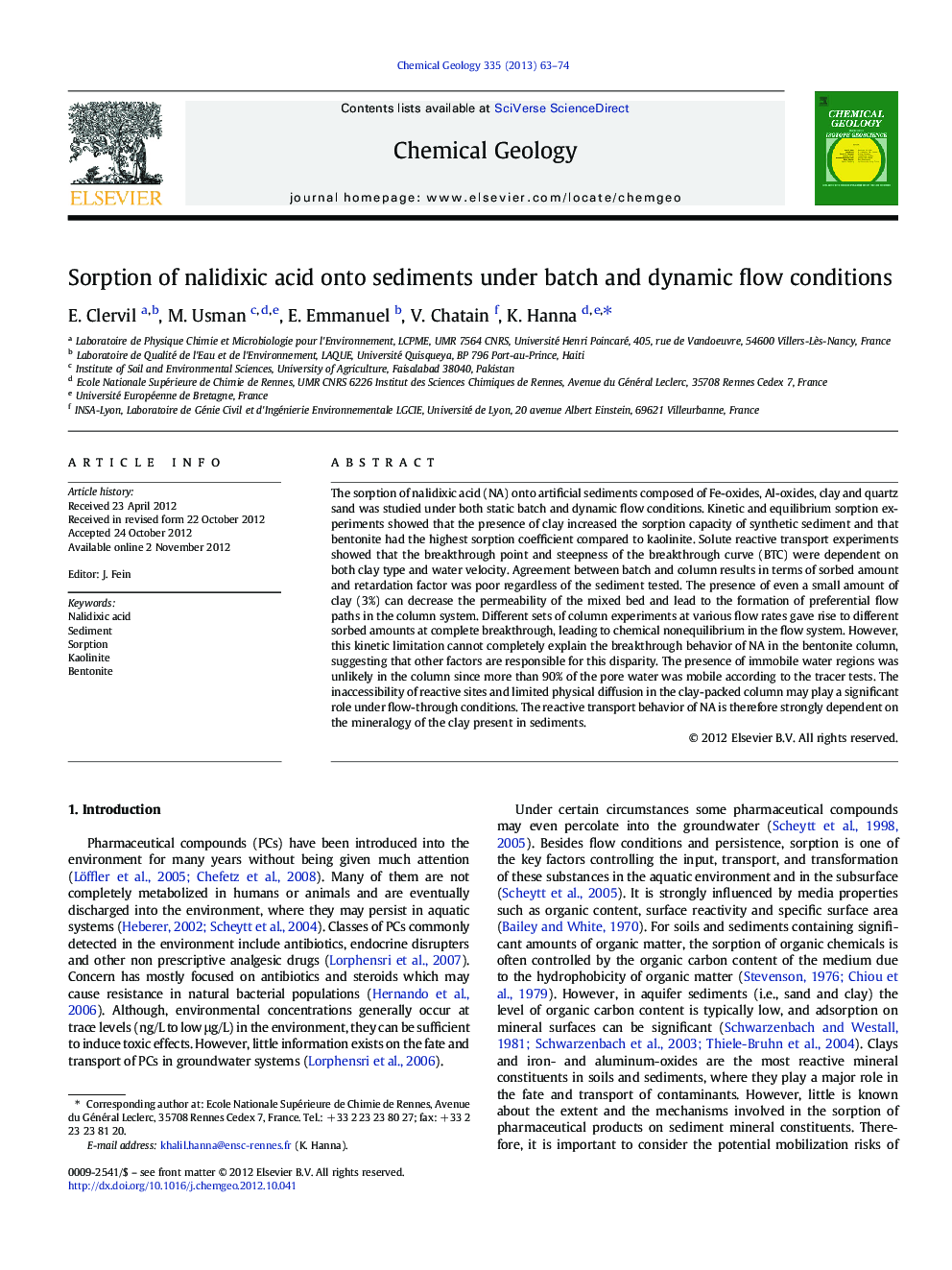| کد مقاله | کد نشریه | سال انتشار | مقاله انگلیسی | نسخه تمام متن |
|---|---|---|---|---|
| 4699106 | 1637632 | 2013 | 12 صفحه PDF | دانلود رایگان |
The sorption of nalidixic acid (NA) onto artificial sediments composed of Fe-oxides, Al-oxides, clay and quartz sand was studied under both static batch and dynamic flow conditions. Kinetic and equilibrium sorption experiments showed that the presence of clay increased the sorption capacity of synthetic sediment and that bentonite had the highest sorption coefficient compared to kaolinite. Solute reactive transport experiments showed that the breakthrough point and steepness of the breakthrough curve (BTC) were dependent on both clay type and water velocity. Agreement between batch and column results in terms of sorbed amount and retardation factor was poor regardless of the sediment tested. The presence of even a small amount of clay (3%) can decrease the permeability of the mixed bed and lead to the formation of preferential flow paths in the column system. Different sets of column experiments at various flow rates gave rise to different sorbed amounts at complete breakthrough, leading to chemical nonequilibrium in the flow system. However, this kinetic limitation cannot completely explain the breakthrough behavior of NA in the bentonite column, suggesting that other factors are responsible for this disparity. The presence of immobile water regions was unlikely in the column since more than 90% of the pore water was mobile according to the tracer tests. The inaccessibility of reactive sites and limited physical diffusion in the clay-packed column may play a significant role under flow-through conditions. The reactive transport behavior of NA is therefore strongly dependent on the mineralogy of the clay present in sediments.
► The presence of clay increased the sorption capacity of synthetic sediment.
► The agreement between batch and column in terms of sorbed amount or R was poor.
► The breakthrough behavior of NA was dependent on clay type.
► The chemical nonequilibrium occurred under flow-through conditions.
► The inaccessibility to reactive sites could explain the fall in sorption capacity.
Journal: Chemical Geology - Volume 335, 6 January 2013, Pages 63–74
